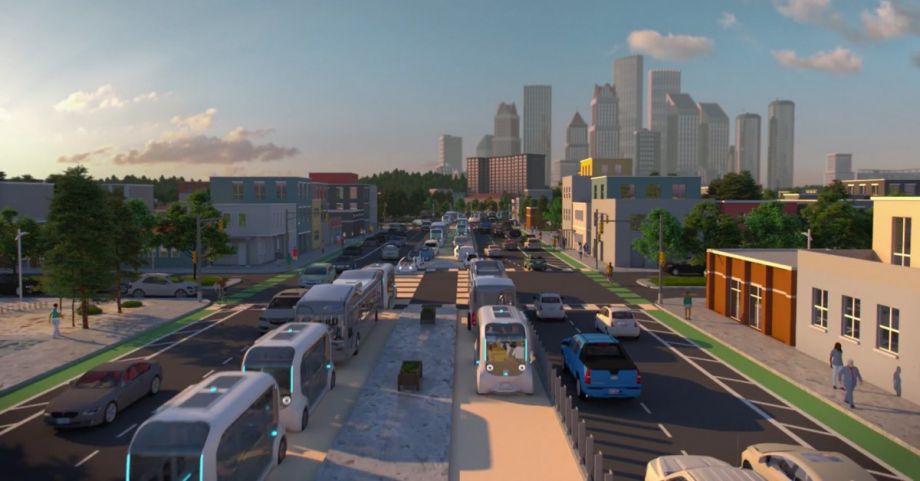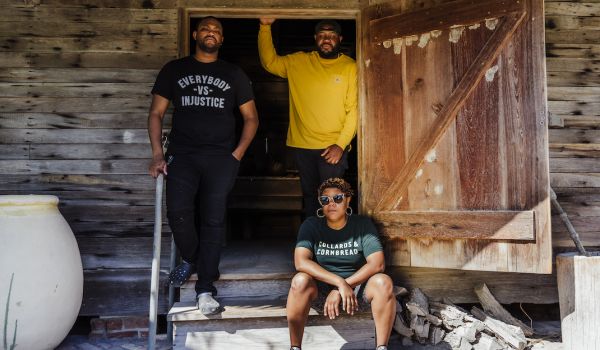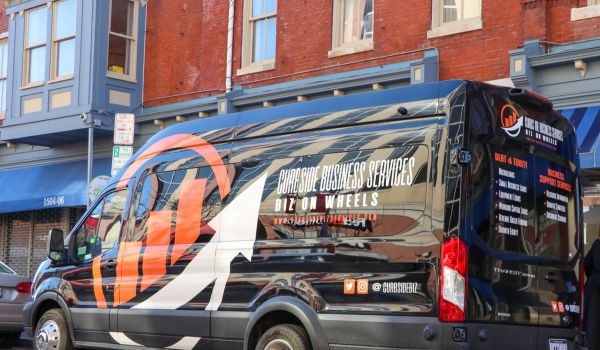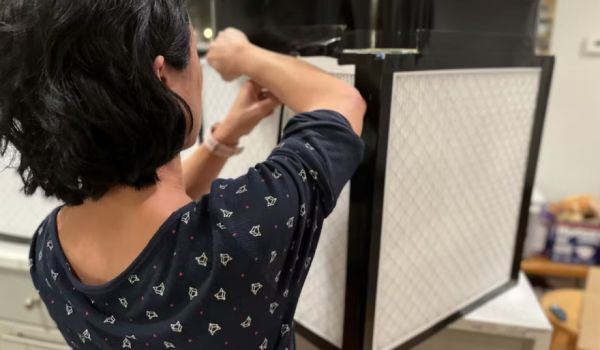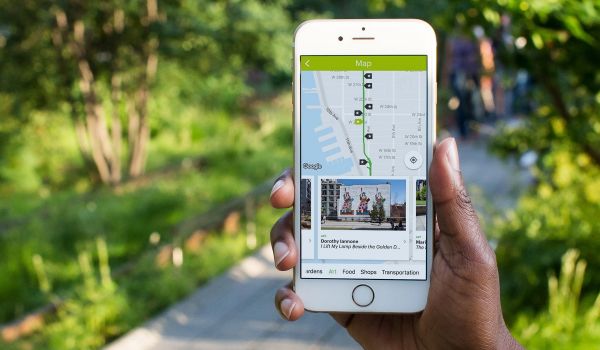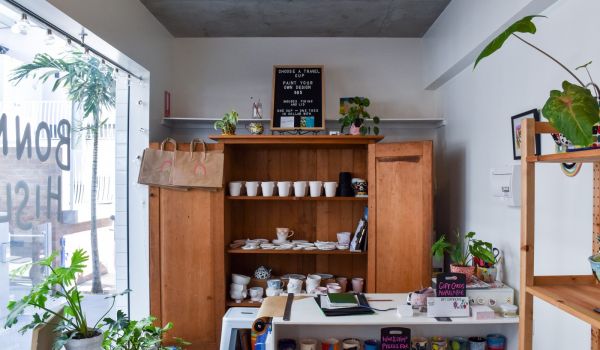Welcome to “The Mobile City,” our weekly roundup of noteworthy transportation developments.
Autonomous-car tecnhology is already making its way into the cars we drive now. Many luxury cars can now park themselves, and some models sense when they’re getting too close to another vehicle and apply the brakes for the driver. In addition, self-driving shuttle buses are now hauling passengers around a number of cities. But we’re still a ways off from the day when autonomous cars and trucks hit the open road. Michigan plans to hasten that day, however, by building a 40-mile road exclusively for autonomous and connected vehicles between Detroit and Ann Arbor.
Elsewhere in the Midwest, St. Louis has found its MetroLink light metro to be a boon for both mobility and development in the area, but its benefits in the city itself have been largely confined to the prosperous corridor headed due west from downtown. Now the city wants to see if it can’t spread the benefits to its impoverished north side and its more middle-class south side by building a north-south line through the city.
Another city where some hope to expand rail transit is Atlanta. There, business leaders in Gwinnett County, northeast of the city, have announced — yet again — that they want to see MARTA rapid transit trains rolling into the county, whose residents will vote on a sales tax that would pay for the expansion this November.
But will the riders of those transit lines enjoy a safe ride? Despite plenty of evidence that they will, many are still skittish, and with COVID-19 showing no signs of disappearing, the skittishness may be justified. Several cities in Asia have taken steps to remove all doubt with temperature-scanner apps and shelters that disinfect passengers while they wait for their bus or train.
Michigan to Build a Road for Autonomous Vehicles
Michigan, the state that gave birth to the American auto industry as we know it, is putting down a huge marker on both that industry’s future and its own, with an assist from Silicon Valley.
Smart Cities Dive reports that on Aug. 13, Michigan’s Democratic governor, Gretchen Witmer, announced that the state would build a 40-mile-long roadway for autonomous and connected vehicles between Detroit and Ann Arbor.
The road will be developed by the Michigan Connected and Automated Vehicle Corridor Project, a public-private consortium led by Cavnue, a subsidiary of Sidewalk Infrastructure Partners (SIP) formed for the purpose of building technology-equipped roads for autonomous vehicles. SIP, in turn, is a subsidiary of Google parent Alphabet formed last year to advance the development of smart-city technology and infrastructure
The project will be overseen by a newly-created unit within the Michigan Department of Transportation, the Office of Future Mobility and Electrification (OFME).
The project’s first phase, expected to last two years, will examine various technologies and determine the corridor’s feasibility. Jonathan Winer, the co-founder of Sidewalk Infrastructure Partners, told CNN it was unclear how much it would cost to retrofit roads for self-driving vehicles but his best guess was $10 million per mile.
The project envisions the roadway as dedicated to shared mobility initially, with autonomous buses its primary users at the outset. It would later be available for use by individual autonomous vehicles.
The project also has the fingerprints of Detroit icon Ford Motor Company all over it. The American automotive giant purchased the deteriorated Michigan Central Railroad station in Detroit and a renovated clothing factory in Detroit two years ago with plans to spend $750 million to turn them into a laboratory where some 5,000 people would develop the cars of the future. Chairman Bill Ford said at the news conference announcing the project that the building purchases and this project were interconnected: “We must build for the world that we’re moving into, not the world that we’ve known,” he said.
For their part, the public officials present at the news conference announcing the project touted it as further proof that Michigan was at the forefront of research into the future of mobility. The state is already home to one of the few autonomous-vehicle proving grounds in the country, the American Center for Mobility. Located in Ypsilanti, the center has repurposed Ford’s huge WIllow Run assembly plant, built in 1940-42 to manufacture bombers for the American forces in World War II, as a development and testing facility for automated and connected vehicles.
“With the creation of this corridor, we will create change even further with mobility, and we will show the world the reality of an accessible and just transportation system for the future,” U.S. Rep. Rashida Tlaib (D-Mich.) said at the news conference.
St. Louis Looks for a Way to Build a North-South MetroLink Line
MetroLink, the light metro system serving St. Louis and its suburbs in Missouri and Illinois, has been popular with both riders and civic officials in the region since its first line opened in 1993. Ever since then, St. Louis City, its surrounding counties and the Bi-State Development Agency, which runs St. Louis’ Metro Transit, have pursued several extensions that have extended that initial line to extend from Lambert-St. Louis International Airport and the western St. Louis County suburb of Shrewsbury all the way to Scott Air Force Base in Illinois, making the system the only light rail transit system in the country to cross a state line.
St. Louis is one of several Midwestern cities whose settlement patterns feature a sharp racial and class divide, with one side of the city heavily Black and the other heavily white. St. Louis’ north side is Black and mostly poor while its south side is white and largely working- and middle-class, with a prosperous corridor extending due west from downtown separating the two.
MetroLink’s two lines run through that corridor in St. Louis. Now, the St. Louis Post-Dispatch reports, the City of St. Louis would like to further transportation equity in the St. Louis region by creating a transit line that would run north-south through the city.
What the city would really like to do is make that transit line part of the MetroLink system. But that carries a price tag of $940 million at minimum, and the city doesn’t have that kind of money lying around. Nor would it even after getting federal transit assistance, and there’s a question of whether a north-south MetroLink line would qualify for federal aid.
So what the city will do instead right now is launch a feasibility study. The study will look at various possible funding mechanisms for the line on top of the sales tax for economic development city voters approved in 2017. It will also examine various technologies for the north-south transit link, including bus rapid transit (BRT), pick one as its recommended alternative and then work with Bi-State to assess the overall capacity of the city transit system with the addition.
The report notes that overcoming economic and racial barriers by expanding access to the city for all of its residents has been a longstanding goal for City Hall.
Gwinett County Business Leaders Back Transit Expansion Tax (Again)
The Atlanta Journal-Constitution reports that the Gwinett County Chamber of Commerce has endorsed a Nov. 3 sales tax referendum that would expand mass transit in the Atlanta area’s second-most-populous county.
This is the second go-round for the sales tax, which Gwinnett voters defeated when it was first proposed in March 2019. The Gwinnett Chamber backed that proposal too; its president and CEO, Nick Masino, also served on Go Gwinnett, the advocacy group that pushed for the tax.
Proceeds from the one-cent sales tax would go towards building a more robust transit system overall in the county. Currently, Gwinett has only local bus service concentrated in the southern and eastern parts of the county. The expansion plan would add bus routes throughout the county, build several BRT routes, and extend the MARTA rapid transit system into the county. MARTA would only operate the rail line, which would have one station in the county; the county would continue to operate the bus system itself or choose a provider to operate it.
The Chamber views mass transit expansion as an economic-development matter. It said in 2019 and says now that more robust transit would attract businesses and residents to the county and encourage existing businesses to stay. “The development of a robust transit system gives our county regional connectivity, greater access to top workforce talent, and improved mobility throughout the county where our residents have the enhanced ability to live, learn, work, and play,” Masino said in a news release.
Asian Cities Take a Different Tack on COVID-Safe Mass Transit: Clean the Riders First
Getting people comfortable with riding mass transit again is a goal for transit agencies all over the world in the wake of the COVID-19 pandemic. Transit agencies all over have stepped up cleaning and sanitizing of vehicles, and some are experimenting with using ultraviolet light as a way to cleanse the air inside trains and buses.
The Thomson Reuters Foundation reports that several Asian cities have opted for a different approach to making sure transit users can ride worry-free: They’re screening and cleaning the riders first, before they board.
The South Korean capital of Seoul has gone the farthest in this direction. Last week, the city installed 10 solar-powered “smart” bus shelters equipped with ultraviolet sterilizers and thermal imaging cameras that check the temperatures of waiting riders in its Seongdong-gu district. Ten more such shelters will be deployed in coming weeks.
“The Smart Shelters were introduced so that residents can experience technology in their daily lives. It is an inclusive service that everyone can benefit from,” a spokesman for Chong Won-O, mayor of Seongdong-gu, said in emailed comments.
Public transit riders in Singapore can check their temperatures using scanners at touch-free kiosks before boarding. A green light means they’re good to go, while a yellow light indicates a high temperature. Temperature screening is not mandatory, but the government hopes the kiosks will encourage Singaporeans to be vigilant when using public transit. Singapore’s Ministry of Culture, Community and Youth plans to install the kiosks at 70 locations throughout the city-state.
And in both China and the Indian city of Delhi, commuters must show that they are symptom-free with a mobile health app before they can board mass transit or airplanes or enter some offices.
The report notes that some digital-rights advocates have raised concerns about surveillance and equity that accompany this approach, but it goes on to say that authorities insist such measures are needed to keep people safe.
Know of a project that should be featured in this column? Send a Tweet with links to @MarketStEl using the hashtag #mobilecity.

Next City contributor Sandy Smith is the home and real estate editor at Philadelphia magazine. Over the years, his work has appeared in Hidden City Philadelphia, the Philadelphia Inquirer and other local and regional publications. His interest in cities stretches back to his youth in Kansas City, and his career in journalism and media relations extends back that far as well.
Follow Sandy .(JavaScript must be enabled to view this email address)

